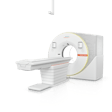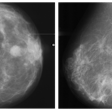CHICAGO - The PI-RR (Prostate Imaging for Recurrence Reporting) system is effective for predicting prostate cancer recurrence, according to research presented December 3 at the RSNA meeting.
"We found that [the PI-RR scoring system] has good sensitivity and specificity, with fair to excellent agreement between different radiologists," presenter Adriano Basso Dias, MD, of the University of Toronto in Canada told session attendees.
In previous research he and colleagues conducted last year, Dias noted that between 27% and 53% of patients who undergo radical prostatectomy (RP) or radiation therapy (RT) have subsequent increases in PSA levels; hence the need to track this recurrence. The PI-RR system was introduced in 2021, and like the PI-RADS system, uses a five-point scale:
- Very low likelihood of recurrence
- Low likelihood of recurrence
- Uncertain
- High likelihood of recurrence
- Very high likelihood of recurrence
Dias' group sought to assess the diagnostic performance of the PI-RR system for predicting the likelihood of local prostate cancer recurrence after whole-gland treatment. The team conducted a literature review of six studies that included 467 patients who underwent MR imaging for prostate cancer post-treatment follow-up. They found high specificity rates at both a cutoff rate equal to or greater than three and a rate equal to or greater than four:
| Performance of PI-RR method for predicting prostate cancer recurrence | ||
|---|---|---|
| Measure |
PI-RR ≥ 3 |
PI-RR ≥ 4 |
| Sensitivity |
77.8% |
61.9% |
| Specificity |
80.2% |
86.6% |
The investigators also reported the following:
- Overall, the PI-RR system performed better with dynamic contrast-enhanced (DCE) MRI sequences rather than T2-weighted images and diffusion-weighted imaging (DWI) after both RT and RP.
- One study reported high diagnostic performance for DCE alone, with a sensitivity of 84.2% and specificity of 82.3%.
- Across all studies included in the review, interreader agreement ranged from fair to excellent.
Dias acknowledged that a limitation of the research was the small number of studies, noting that this was "likely due to the recent introduction of PI-RR." But overall, his group's findings support the use of the method for diagnosing recurrent prostate cancer, he said. He did urge further research with larger sample sizes, a multicenter approach, and a prospective design.
For our full coverage of this year’s meeting, visit our RADCast.



















